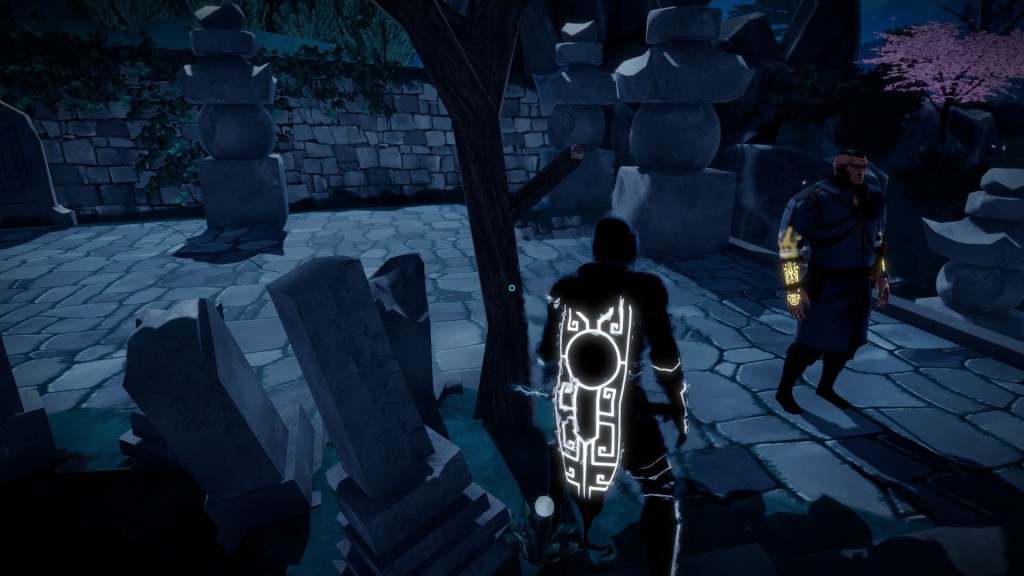

On its own, this is a non-issue and, in fact, should've assisted in enforcing the notion of vulnerability.

In its place is a single, context-sensitive button that sends the aragami into a canned (and initially enjoyable) takedown animation. Melee combat is absent in the traditional sense. Despite a bit of frustration stemming from the need for precision (especially in regards to ledges and the shadows of very small objects), the actual act of leaping from shadow to shadow feels quite sharp and opens stages up in unexpected ways. It's a fun augmentation, but rather than subvert any traditional approaches to the stealth genre, it mostly serves to reinforce existing notions. Most of this is to be expected of a standard stealth experience, but developer Lince Works then twists the formula slightly by enforcing an intense reliance on darkness not only must the aragami stick to the shadows to avoid discovery, he can also use them to teleport throughout the level and charge various abilities. To aid the player in this task, the titular aragami can employ a number of obtainable powers to blind, distract, or consume his foes. For large swaths of the campaign, objectives alternate between reaching the far end of a stage and destroying an object somewhere within it, slaying or slipping past wandering guards all the while. It is on this logical side of the margin that Aragami stakes its claim, and while the game itself is solid and, in some ways, intensely clever, it seems to be afraid of itself afraid of delving too deeply into certain mechanics, and of allowing the player anything more than a glimpse at some much-needed chaos.Īragami's core gameplay isn't terribly different from its predecessors. Stray too far on the side of chaos, and the game feels impenetrable, with the player left betrayed by their gained knowledge. Stray too far on the side of logic, and the game becomes rote, a simple exercise in pattern recognition. In their purest form, stealth games make the player feel both all-powerful and crushingly vulnerable.Ĭreating a stealth game, then, is an act of balancing both sides of the equation. They let the player feel both control over a situation and a degree of wariness, of uncertainty. They feel alive, and yet decipherable in ways real life can't be. When at their best, stealth games feel like a mixture of logical puzzle-solving and pure, chaotic improvisation.


 0 kommentar(er)
0 kommentar(er)
